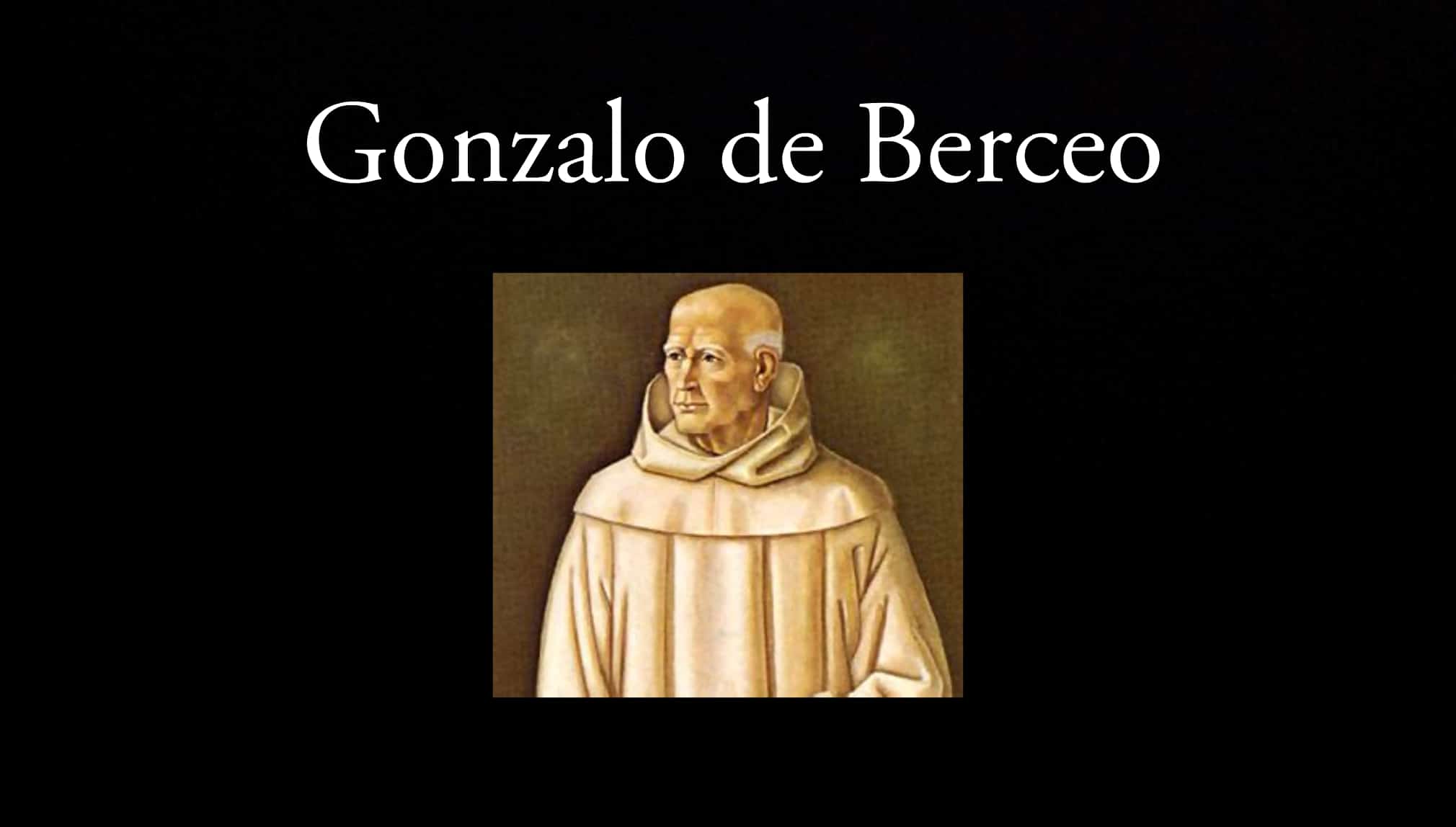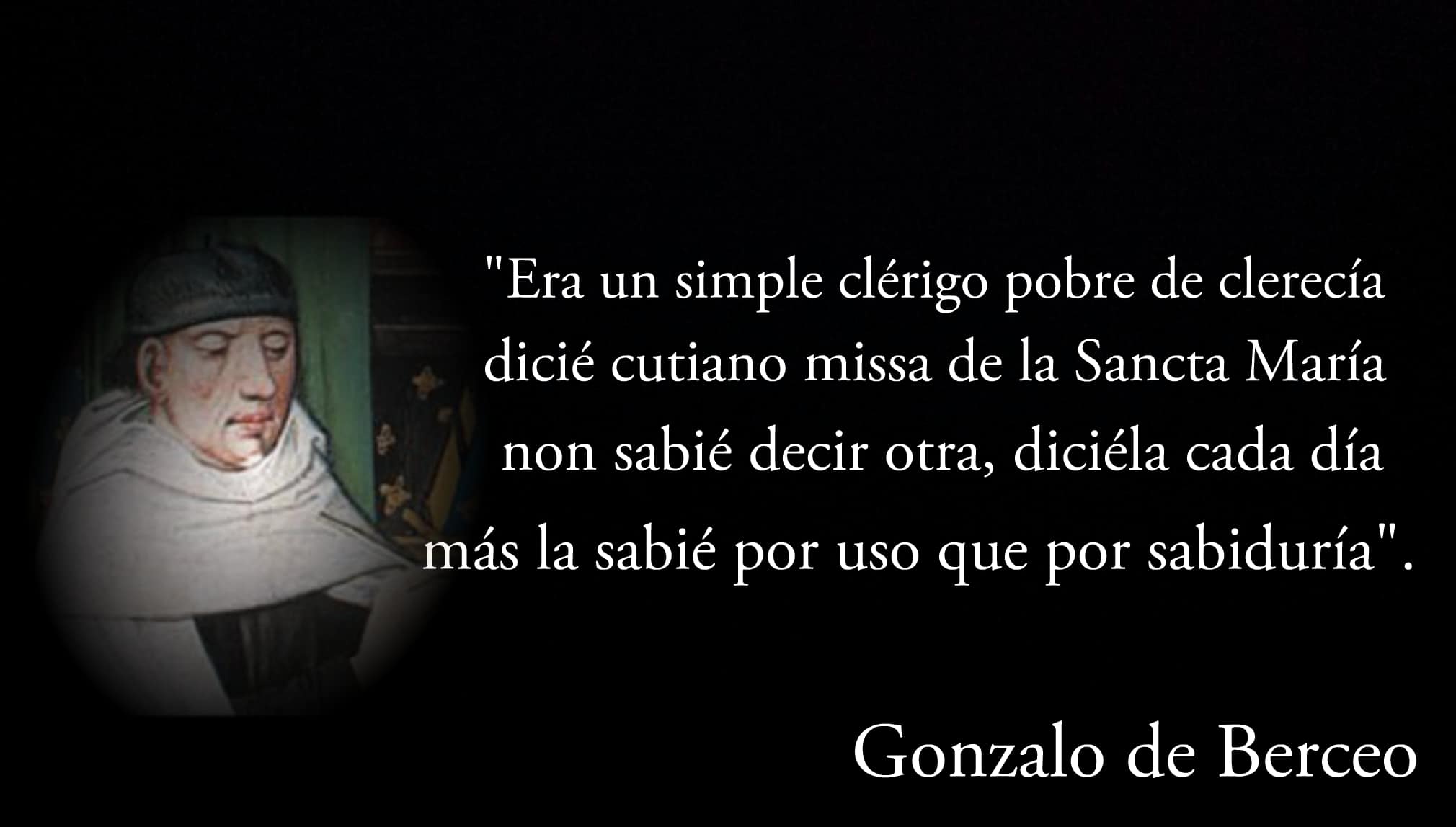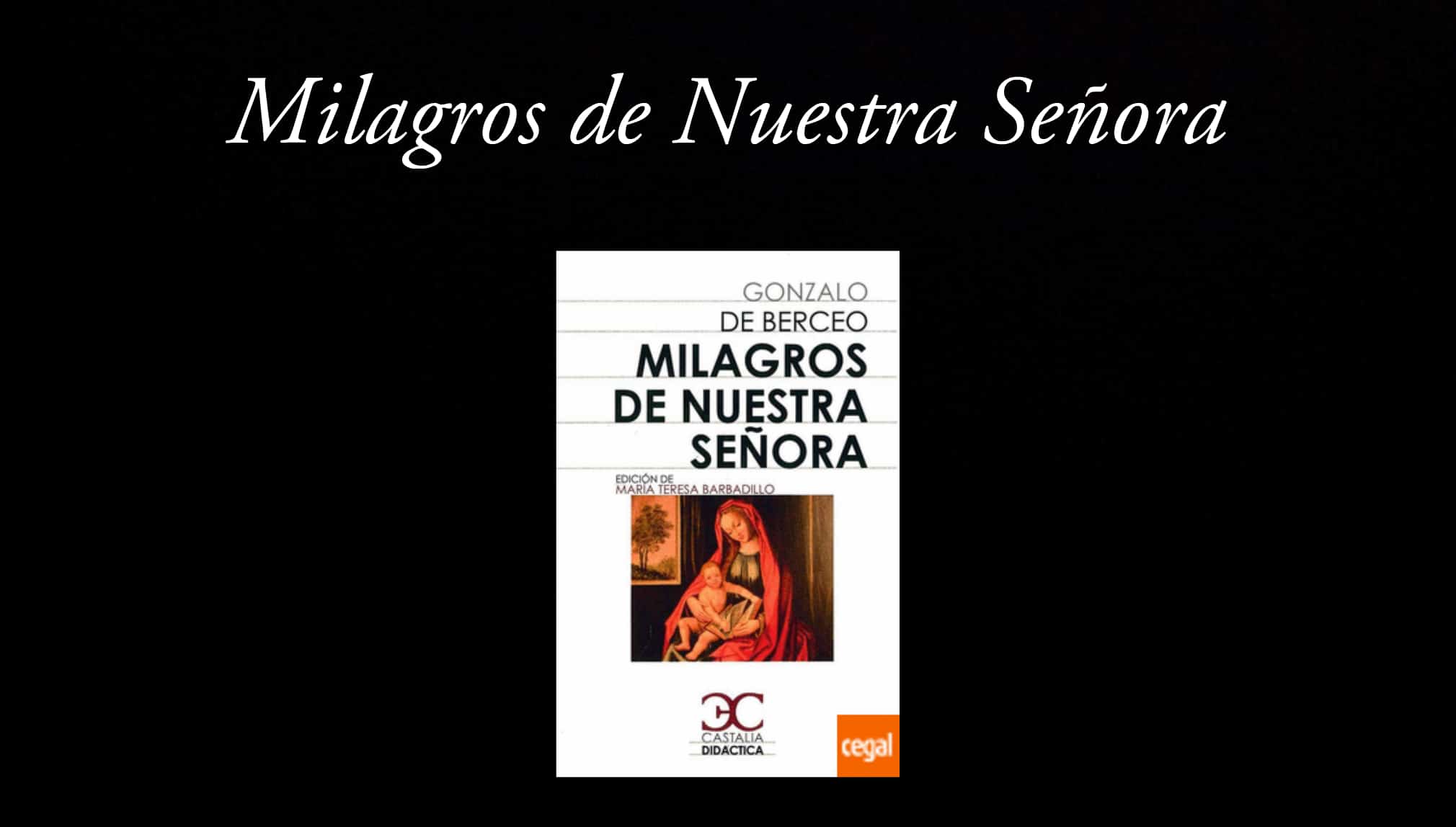
Gonzalo de Berceo.
Gonzalo de Berceo was a Spanish poet; in fact, He is widely recognized for being considered the first in his trade in the Spanish language. He is appreciated in the literary world for the quality of his medieval writing. His work catapulted him as a literary and clergyman, occupying positions of great importance. His works were fueled by his great devotion and love for Christian belief.
Beyond enjoying popularity in his time for being a man of faith, Gonzalo de Berceo managed to transcend time due to his role as an author. The feat of the talent of this versifier is such that it has only been compared with authors of the stature of Per Abbat, the writer (compiler) of the Song of mine Cid.
Biographical profile
Birth and childhood
Maese Gonzalo de Berceo was born at the end of the 1195th century, probably around 1198 or XNUMX, in Berceo, Spain. This region is located between San Millán de Cogolla (La Rioja) and Calahorra, (Logroño). Although there are no biographical records of his family origin or his childhood as such, it is known that he had a brother, who maintained an ecclesiastical commitment as a clergyman.
As a child, Gonzalo was raised in the monastery of San Millán de Suso. However, years later his study house would be the neighboring monastery of San Millán de la Cogolla. There, he was received as a secular priest. Then in 1221 he made his way as a deacon.
In 1222, the Riojan headed his academic training in the popular Studium Generale de Palencia - the first university format in the Middle Ages. Later, in 1227 and under the direction of Bishop Don Tello Téllez de Meneses, Berceo completed his higher education studies. With this achievement, he established himself as an important member and maximum exponent of the mester de clerecía.
The versatility of a monk
Besides priest and deacon, This professed religious also served as a priest. He did so from the year 1237. Worthy of having been raised in a monastery - and with a great capacity for stewardship - his work did not stop there. As soon as he had the opportunity, he was employed as a guide for the groups of novices.
At the same time, he served as a teacher of confession and an ecclesiastical notary. The diversity of his knowledge and extensive training made him a leading scholar, educator, author, and literary expert.
The religion of a poet
His life as a monk determined the direction that his verses and narrative works would take. The heart of his literary work was always the idiosyncrasies of worship and religion. Master Gonzalo saw majesty and simplicity when expressing his lyrics towards saints and divinities who enjoyed his adoration in the monasteries.
His works became the space where he recreated his ecclesiastical devotion and love of the faith. In addition, they were the way to reach some closeness to the people and have the opportunity to increase their religiosity with poetic verses.
His written work was based mainly on hagiographies. That is, in biographical works focused on saints and other religious images.
The Mester of Clergy
One cannot talk about the foundation of the mester de clerecía without mentioning Gonzalo de Berceo. By occupying the leading position in this school of learned men, This medieval writer was on the arduous mission of creating and refining the Castilian language in its entirety. All this, in order to enrich literature and find its style.
After intertwining his Riojan dialect - typical of the countryside - with minstrel poetry, with other literary forms and with the mother of Romance languages, Latin, the poet - at last - got his way. The result of all this fusion contributed in a radical way to the expansion of the already consolidated Spanish language throughout the world, opening the way, in turn, to a poetry of a scholarly character.
The cuaderna via in the work of Berceo
The style cultivated by Gonzalo de Berceo, and who later adopted the clergy mester, is known as cuaderna via. It is a type of stanza typical of the Spanish meter. It is composed of four verses of fourteen syllables (Alexandrian), divided into two hemistichs of 7 syllables. All with consonant rhyme.
The name of the frame via It comes from the first work in Spanish written in this style. This is the Book of Alexandre, a poem of unknown authorship about the life of Alexander the Great. The Latin term refers to quadrivium, the composition of the general studies of the time.
The frame via It is the Castilian version of the Alexandrian verse of French origin. It should be noted that in Spain this resource used to be a style only used by members of the clergy or men with studies.
Basque in Berceo's work
History relates that in the San Millán de la Cogolla monastery - to which Gonzalo was close - Basque was spoken, together with many nearby Riojan towns. Although the famous poet learned Latin and other Romance languages through his ecclesiastical training, Basque terms were not lacking in his works.
In fact, a large part of the works, translations and documents found by Gonzalo de Berceo were written in Basque. This language is probably the oldest in Europe. The so-called "Basque" was widely used in medieval times, like Latin and Castilian. In fact, it is likely that the writer contributed greatly to the shaping of the latter.

Fragment of a poem by Gonzalo de Berceo.
Analysis of his works
The twelfth century was adorned with the pen of this distinguished writer. Gonzalo de Berceo's way of being and his poetic love inevitably led him to enrich literature. His work had no more and no less than 13.000 verses. Not in vain is he given the title of "Father of Castilian poetry." Some critics describe his intellectual work as great and amazing.
An eternal style
His ability to write never presented a violent form, quite the contrary. Berceo implemented an animated, traditional, humble poetry, with a village and religious touch. His experience in translations of works previously written in Latin, also brought out the originality in the argument of his writing and in the sense that he gave to his life.
His literary work was always carried out under the implementation of the cuaderna via. This, until his death in San Millan de la Cogolla, between 1264 or 1268.
The poetic trinity and translations
Berceo's versification has notable inspiration from sacred books, as well as from the mystical air of religion. His works are composed of a poetic trinity in which they stand out:
- Lives of saints.
- Marian works.
- Doctrinal works.
For obvious reasons, his poetic performance was influenced by a series of translations of ecclesiastical hymns that he carried out.
Period on saints
Works like Life of San Millán, Life of Santo Domingo de Silos, Poem of Santa Oria and The martyrdom of San Lorenzo, make up this first stage. It is characterized by emphasizing the chronicles of its protagonists. Its details and minstrel harmonies were based on Latin bases and convent traditions.
Marian current
In this stage of devotion to the Virgin Mary, Berceo achieved three titles that are key pieces: Praises of Our Lady, Mourning of the Virgin and Miracles of Our Lady, the latter being his most notorious work. It stands out for its picturesque and folkloric verses to the mother of Jesus.
This series of twenty-five poems describe Mary as a character who intercedes before God for each of the believers, making various miracles of each request. Through this poem Gonzalo de Berceo's desire was to encourage faith in the community.
About the doctrine
In this period, literary works such as: Of the signs that appear before the Last Judgment y Of the sacrifice of the mass, unify the poetic trinity of this famous author. Through the first title it addresses the theme of the well-known biblical final judgment and the different signs that the world will have before this event.
On the other hand, in the second work, Berceo expressed in detail the symbolism of the stages of a mass. He also made the description of the priestly movements, as if it were a manual.
Miracles of Our Lady, fragment (verses from 1265 to 1287)

Miracles of Our Lady.
XIV
"San Miguel de la Tumba is a great monastery,
The sea surrounds everything, Elli lies in the middle,
the periglossal logar do suffer grand lazerio
the monks who ý live in essi ciminterio.
In this monastery that we have nominated,
avié of good monks, good proven convent,
altar of the Glorious rich and very expensive,
in it rich image of very high price.
The image was on his throne perched,
I am fixed in his arms, it is customary,
The laughs around her, I was well company,
as a rich queen of God sanctified.
I had a rich crown like a rich queen,
of its rich implant in the place of the curtain,
It was well fitted, of very fine lavor,
I was worth more essi people than the avié vezina ”.
Complete list of his works
Poetry
- Life of San Millán.
- Life of Santo Domingo de Silos.
- Poem of Santa Oria.
- The martyrdom of Saint Lawrence.
- Praises of Our Lady.
- Mourning of the Virgin.
- Miracles of Our Lady.
- Of the signs that appear before the Final Judgment.
- Of the sacrifice of the mass.
Hymns
- From Ave maris stella.
- Come Creator Spiritus.
- From Christe, qui lux es et dies.
Other works
- Virgin Saint Auria.
- Poem of Alexander the Great.
- The life of San Lorenzo.
- Chant.